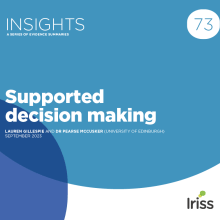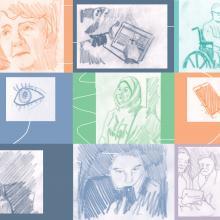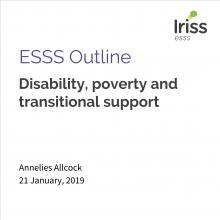Read the full evidence outline that provides an overview of the literature around extra living costs that people with disabilities face (including references).
In the United Kingdom, more than 20% of the population live with a disability. The link between disability and poor financial circumstances has been well established by research. A household with a disabled member diverts resources to goods and services which are required because of disability, and experiences a lower standard of living than their non-disabled counterparts.
Disability plays a huge part in poverty in the UK. Adults in households with one or more disabled people are more likely to have low incomes than other adults. Because people with disabilities have additional spending needs they are in reality living below the minimum level of well-being that that poverty line was meant to establish.
Research found on average, disabled people face extra costs of £570 a month related to their impairment or condition.
Drivers of the additional costs of disability include impairment type, severity of impairment, household composition, income, and other factors such as the suitability of accommodation, whether in employment or not, and issues around transport.
Scope identified three types of costs:
- Specialised goods - often with an added premium and includes disability-related equipment that can be a one off, but expensive, purchase, such as assistive technology, wheelchairs and other mobility aids, screen readers or adapted household items and furniture.
- Greater use of non-specialised goods and services - extra costs occur where disabled people consume more of certain non-specialised goods and services than non-disabled people. While the products themselves may be low-cost and would be recognisable to non-disabled people as necessary expenditure, needing to buy them more frequently results in disabled people spending more over time.
- Higher cost for non-specialised goods and services - includes anything that costs more to disabled people than non-disabled people for an equivalent product or service.
Key areas of extra costs include:
- Transport - car travel and parking extenuated by frequent hospital visits, specialist equipment for travelling with a disabled child, and longer journeys to reach accessible recreation and leisure activities.
- Toys - purchase of more expensive specialist toys and play equipment for disabled children, such as sensory toys.
- Clothing - those suitable for disabled children are usually more expensive and need to be replaced more frequently due to wear and tear.
- Energy - increased heating in the home, and cleaning of bedding and clothes
- Therapies - privately purchased therapy for both children (physiotherapy, hydrotherapy, speech and language therapy) and their parents (parent counselling and emotional support).
- Home adaptations - changes to living spaces to make them safer and more accessible for disabled children.
Lack of information about disabled people’s living costs mean that levels of nationally provided financial benefits and local services are determined using limited evidence. Certain state benefits are meant to offset, at least partially, the additional costs associated with disability, but the extent to which they do is not clear.
Suggested citation: Sanders, R (2022) ESSS Outline: An overview of self-neglect. Iriss. https://doi.org/10.31583/esss.20221125




